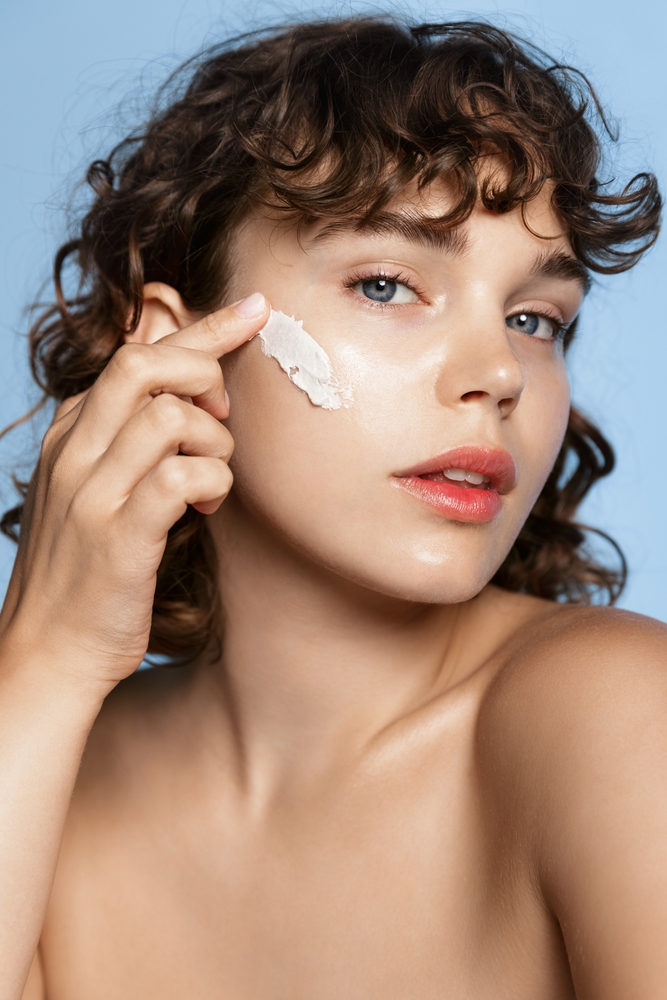Skincare that takes care of the skin microbiome is the first cosmetic step to resilient and healthy skin. A beauty move suitable for all skin types and all ages. Bringing the bacterial flora in balance is equivalent to building the perfect base that makes all other treatments more effective. Because if this is not taken into account, it is easier to incur other skin conditions, especially during the stages of change in which the whole organism must find a new balance.
What is the skin microbiome?
When we think of the microbiome, we immediately think of the gut. Yet, the skin also has its own specific microbiome: a living ecosystem made up of beneficial microorganisms, an integral part of the skin’s surface, composed mainly of bacteria. The microbiome is a unique heritage that evolves over time. In adulthood, there are up to 1,000 different species of bacteria present on the skin. What is its function? These good microorganisms are an important defense tool for the skin. But not only that, they help the skin defend itself against external agents (so-called transient bacteria that, unlike resident bacteria, do not naturally inhabit our skin), maintain the skin barrier at its best function, support and have an anti-inflammatory action. This is why many diseases, such as acne or dermatitis, are closely linked to the health of the microbiome.
Diseases that affect sensitive skin have one cause in common: disruption of the skin barrier. Underlying atopic dermatitis, rosacea, and rosacea is a lowering of the natural defense against external aggressions and an inflammatory state; two factors that are closely related to the balance of the microbiome.
The brain-gut-skin axis
We have talked about the cutaneous skin microbiome, but what role does the gut microbiome play in skin health? The microbiota (i.e., the population of microorganisms that colonize a certain environment such as the skin or gut, while microbiome refers to the totality of the genetic pool expressed by the microbiota) is involved in the pathogenesis of many skin diseases and is responsible for aspects of aging. Indeed, we speak of the brain-gut-skin axis, a link first studied by dermatologists John H. Stokes and Donald M. Pillsbury. How do these seemingly distant organs communicate with each other? Certain situations of psychological distress, such as stress through immunological mediators, can cause an alteration of the gut flora. This situation of dysbiosis can compromise the integrity of the intestinal walls by allowing many pathogenic microbes to reach even the skin creating the breeding ground for inflammatory-type diseases. This is why a balanced gut flora not only contributes to intestinal well-being but also produces beneficial effects at the systemic level. This approach, which investigates the link between gut inflammation and neuro-psychic well-being, and between dysbiosis and skin diseases, reminds us that we are psychosomatic beings and that our mind and body are never disconnected from each other. Specifically, this is taken care of by psychodermatology, which has Pnei, or the study of the relationships between the psyche, nervous system, endocrine system, and immune system, as its object of interest.
The skincare routine for the microbiome
Maintaining the ideal skin microbiome begins with proper cleansing, which must maintain the skin’s natural pH balance and not alter its defenses. For example, products containing harsh surfactants attack the interaction between the skin and the microbiome: they alter the protective layer and, consequently also alter the composition of the microbiome. At this point, the skin is more fragile and more prone to an unbalanced condition. The optimal cleanser has a restorative action and cleanses with gentle surfactants.
Recommended product: Cleansing Detergente Restitutivo is ideal for treating dry, sensitive, delicate, or reddened skin. It removes impurities without altering the hydrolipidic film.

What are the active ingredients that help keep the skin microbiome in balance? Probiotics, which restore the proper balance of the skin microflora. The most common ones used in cosmetics are extracts from lactobacillus fermentation. They are also referred to as pre and post-biotics, substances that act as nutrients for the microorganisms living on the skin. They are present in cosmetic formulas in the form of plant sugars such as fructooligosaccharides and glucomannan. Inulin, which has a bactericidal function, is also extracted from plants.
Also important for maintaining the microbiome are humectants to rebalance the skin’s protective hydrolipid film.
